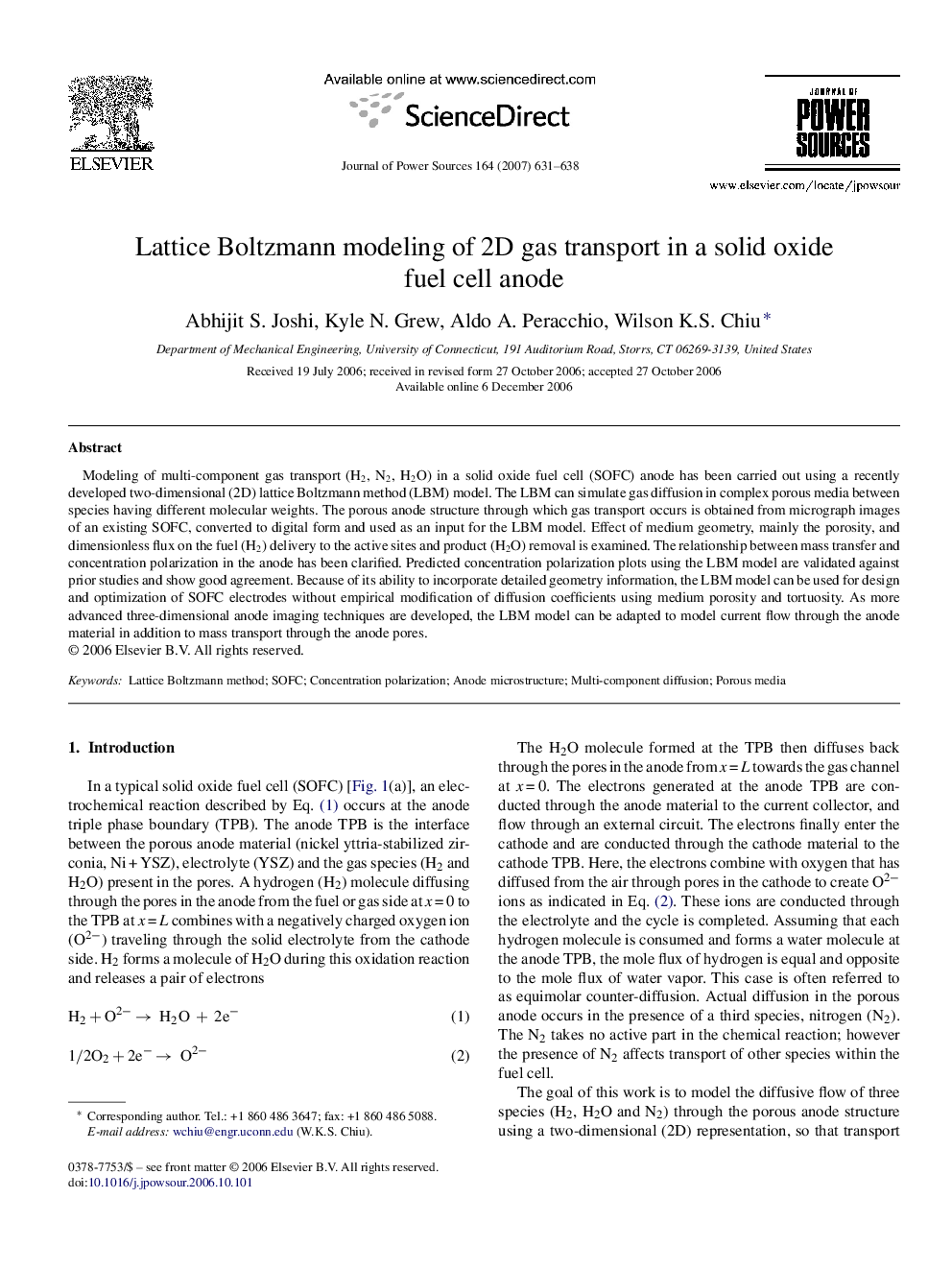| Article ID | Journal | Published Year | Pages | File Type |
|---|---|---|---|---|
| 1292139 | Journal of Power Sources | 2007 | 8 Pages |
Modeling of multi-component gas transport (H2, N2, H2O) in a solid oxide fuel cell (SOFC) anode has been carried out using a recently developed two-dimensional (2D) lattice Boltzmann method (LBM) model. The LBM can simulate gas diffusion in complex porous media between species having different molecular weights. The porous anode structure through which gas transport occurs is obtained from micrograph images of an existing SOFC, converted to digital form and used as an input for the LBM model. Effect of medium geometry, mainly the porosity, and dimensionless flux on the fuel (H2) delivery to the active sites and product (H2O) removal is examined. The relationship between mass transfer and concentration polarization in the anode has been clarified. Predicted concentration polarization plots using the LBM model are validated against prior studies and show good agreement. Because of its ability to incorporate detailed geometry information, the LBM model can be used for design and optimization of SOFC electrodes without empirical modification of diffusion coefficients using medium porosity and tortuosity. As more advanced three-dimensional anode imaging techniques are developed, the LBM model can be adapted to model current flow through the anode material in addition to mass transport through the anode pores.
